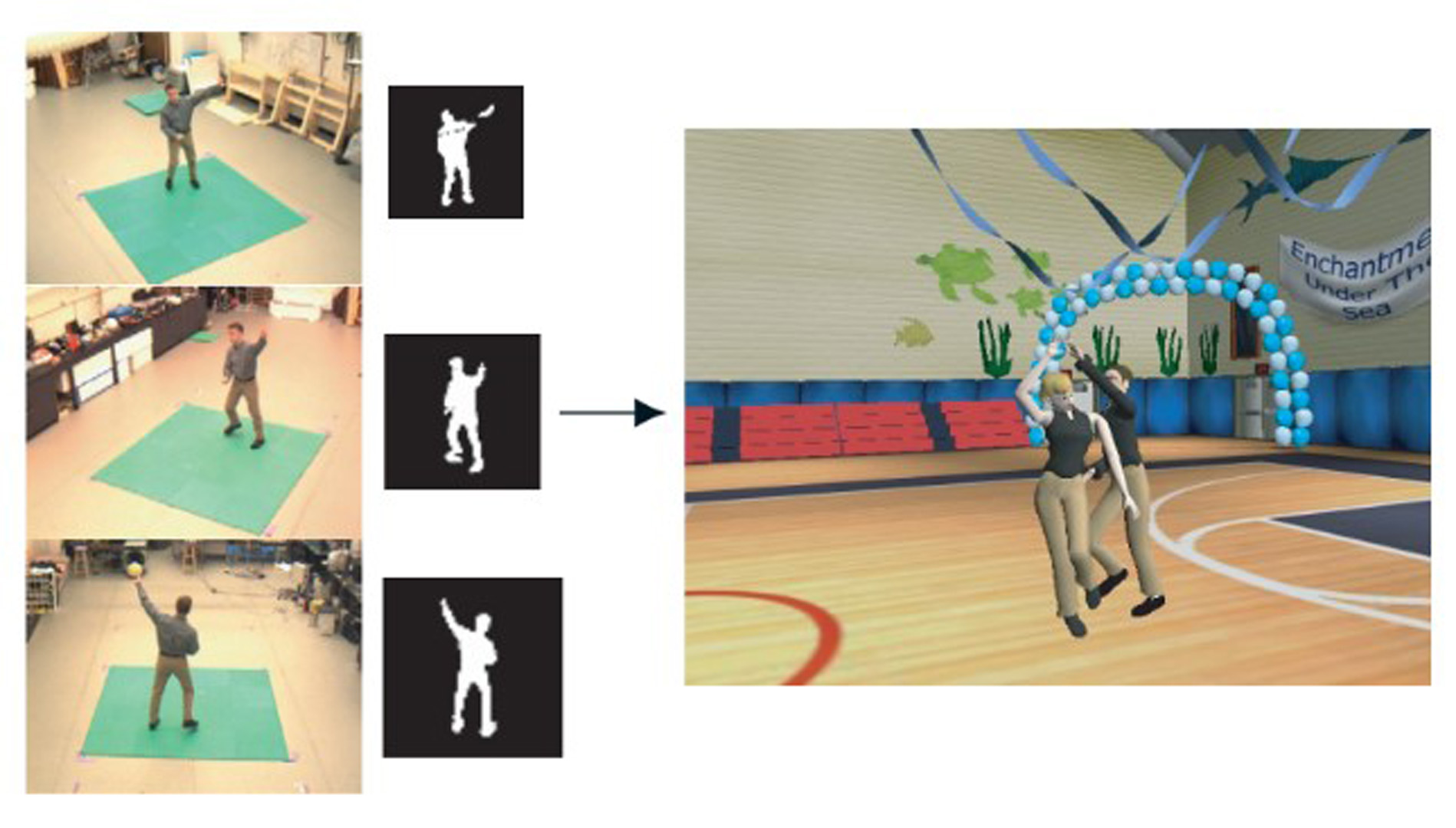“Learning Silhouette Features for Control of Human Motion” by Ren, Shakhnarovich and Hodgins
Conference:
Type:
Title:
- Learning Silhouette Features for Control of Human Motion
Presenter(s)/Author(s):
Abstract:
People, even without training, can move in expressive ways to play charades, pantomime a winning touchdown, or act out a story for a child. The goal of our research is to provide untrained users with a vision-based interface for interactively controlling complex human motions. The insight behind our system is that the domain knowledge from a pre-recorded motion database allows plausible movement to be inferred from the incomplete information obtained from simple vision processing. The experimental scenario we use in this research is a single user animating two people swing dancing. We present a low-cost camera-based system (one PC and three video cameras) that allows an untrained user to “drive” the dance of the couple interactively (Figure 1). The user can change the high-level structure of the dance, introducing a different sequence of steps, rotations, or movements. The final sequence retains the quality of previously captured dance yet reflects the user’s higher-level goals and spontaneity. Our approach yields results for more complex behaviors and longer sequences than have been demonstrated in previous silhouette-based systems.
References:
Lee, J., Chai, J., Reitsma, P., Hodgins, J., and Pollard, N. 2002. Interactive control of avatars animated with human motion data. In ACM Transactions on Graphics, vol. 21, 491–500.
Schapire, R. E., and Singer, Y. 1999. Improved boosting algorithms using confidence-rated predictions. In Machine Learning, 297–336.
Viola, P., and Jones, M. 2001. Rapid object detection using a boosted cascade of simple features. In Proceedings of IEEE Conference on Computer Vision and Pattern Recognition.





